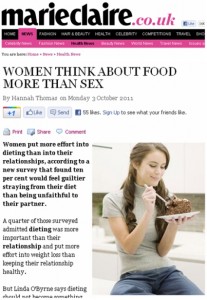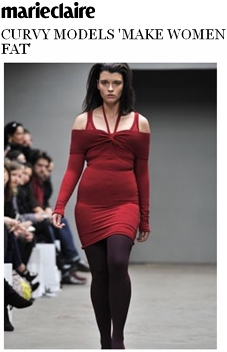Estrogen and urinary incontinence: is there a link?
One of the most common and (and yet unspoken about) conditions in women is urinary incontinence (UI) or problems with bladder control. Defined as the involuntary loss of urine – either due to a weakening of the pelvic floor muscles and in association with pressure on the bladder (stress urinary incontinence) or due to unknown causes and associated with an uncontrollable urge to pass urine, frequency and nighttime awakening (urge urinary incontinence or overactive bladder) – urinary incontinence is most definitely associated with aging. In fact, roughly 15 million women in the U.S. have stress urinary incontinence and about 20 million, overactive bladder.
There are a multitudes of risk factors for urinary incontinence and they range from weight, vaginal deliveries and pelvic surgery to alcohol use and of course, as mentioned, growing older. However, why is menopausal status also a risk factor?
One word: estrogen.
Indeed, results from the infamous Women’s Health Initiative study demonstrated that women who were randomized to combination hormone therapy or estrogen only were at increased risk for worsening urinary incontinence symptoms or for developing urinary incontinence after only one year of use. However, like other data from this study, questions have been raised with regard to the findings, namely that they are not applicable to the general population. And yet, it is critical to learn if using hormone therapy increases urinary incontinence risk; these conditions significantly affect quality of life and at their severest, limit physical and social activities, limit intimacy and other relationships, limit work productivity and affect overall wellbeing.
Rather than generalize, however, it’s important to take a close look at ethnically diverse populations of women in the community and tease out if there are any specific factors related to estrogen use that increase incontinence risk. That is exactly what a group of researchers did recently, when they examined a group of 167 women in menopause who had been surveyed in 1993, found to have no urinary incontinence and then reinterviewed eleven years later in 2004. In this study, which was published in Menopause journal,the researchers specifically evaluated if the women had used estrogen and if so, for how long (i.e. less than five years or more than five years). The findings? Although none of the women reported having urinary incontinence issues at the first interview, just over a decade later, 28% reported that they had developed urinary incontinence and almost 19%, that they developed urinary incontinence that resulted impacted their ability to function (e.g. avoiding social gatherings, not visiting friends or going to church, or avoiding traveling, shopping or physical activities). What’s more, of the women surveyed who reported that they had used estrogen for more than five years, 15% developed new cases of urinary incontinence with an associated loss of function.
According a related piece in Reuters, the study’s lead investigator says that they didn’t take into account how much estrogen the women were using or if they used it in conjunction with progesterone, so there are weaknesses in the study. Still, it does appear that taking estrogen for more than five years may significantly increase the risk for bladder control issues. The next piece of the puzzle is discovering why it affects bladder function in the first place.
Bladder control issues are serious business. Yet another reason to speak to your doctor before moving forward on hormone therapy. Your move – worth the risk?
Read MoreTrick or…
treat?!
[Source: Pinup Babes]
It’s Halloween and I’ve got a treat for you. It’s called Intimina, a new line of feminine wellbeing products and information manufactured by the company responsible LELO. If you are unfamiliar with LELO, well, it’s time to get familiarized. LELO are intimate designer ‘lifestyle products’ that not only look good but are well designed, long lasting and rechargeable; I generally refer women and men to LELO first when discussions about adult massagers and intimate market items arise. In fact, I was introduced to LELO several years ago and never looked back. And while the price point is higher than what you might be accustomed to when it comes to vibrators, they are well worth the extra investment.
But I digress…
I received an email from an Intimina PR manager several weeks ago, inquiring if I would be interested in checking out their Intimina brand. When I read that they were attached to LELO (the co-founder is married to LELO Founder Filip Sedic), I didn’t hesitate for a second; I was already a major fan of theirs’.
According to the promotional material, “Intimina by LELO is an exciting new brand focused on providing women with the the very highest standard of products to supplement their intimate wellbeing…” Okay, sounds like standard PR jargon, right? However, I am very impressed by their product offerings, which range from unique Kegel exercisers to maintain and strengthen the pelvic floor to feminine moisturizers to their famous massagers (rebranded in pink, which admittedly, I am not crazy about but if the shoe fits…).
Most of you probably know that Kegel exercise is repetitive contracting and relaxing of the pelvic floor muscles (the vagina and ligaments that support the bladder) in order improve tone and strength, treat or prevent prolapse and stress urinary incontinence. The latter condition, which describes involuntary leakage of urine because the the muscles supporting the urethra don’t shut as tightly as they should, disproportionately affects women, increases with age, and often occurs after pregnancy. It is prompted by activity such as coughing, sneezing and heavy lifting – anything that places pressure on the bladder. Currently, as many as 15 million women in the US are affected by stress urinary incontinence, and with age, it may occur concurrently with overactive bladder, a condition associated with an uncontrolled urge to urinate, frequency of urination, incontinence and nighttime awakening to urinate.
Having never given birth, I’ve not given much thought to strengthening my pelvic floor muscles. However, I know many women who suffer from stress urinary incontinence. Consequently, I am going to try out the Intimina Kegel Exercisers and report back.
My treat. No trick!
Happy Halloween and stay tuned…
p.s. Treat yourself to a LELO product while you await the Intimina review. 0 fat, 0 calories, 100% pleasure.
Disclaimer: Intimina/LELO did not ask me to write about their product nor did they pay me to do so. They provided me with a free sample of the Kegel Exercisers, the Feminine Moisturizer and some background materials. I intend to give them a test drive simply because stress urinary incontinence is a huge problem in women, as is vaginal dryness as women age.
Read More
Just chew your [fill in the blank] away…with Zoft
[Photo does not depict actual product]
No! It really works! And it’s as easy as chewing gum.”
“What’s that,” you ask?
Now you can just chew the menopause [blues/anxiety/hot flashes, mood swings, night sweats, heart palpitations, urinary problems AND vaginal dryness] away! Wow – who knew it was so simple? In fact, Zoft ® Balance Gum (previously called Zoft Menopause Gum) will cure what ails you in just weeks if not days, with the added benefit of fighting dental decay, improving concentration AND fighting bad breath.
Zoft balance is a unique blend of Dong Quai Root, Black Cohosh Root Extract, Damiana Leaf, and Mexican Wild Yam Root, harnessing the power of indigenous knowledge to fight menopausal symptoms. Moreover, this breakthrough has been featured on ‘The View’ not once, but TWICE, which of course, provides an authoritative testimonial as to its efficacy.
Wait! There’s more….the company also offers Fulfill gum (pun intended???) to enlarge your breasts WITHOUT surgery, and Slim gum to help you get back into that size 4 pair of jeans. And just in case your partner feels left out, the company manufactures Relax gum to take that stress out of his or her life.
One-stop shopping for all that ails. Chew on that, won’t you?
Read More
Wednesday Bubble: Should Fatties Get a Room…and Other ‘Fine’ Assaults on Women… Guest Post by Dr. Brian Hughes
My friend Dr. Brian Hughes is at it again. “At what,” you ask? At identifying media assaults on women, on aging and on identities. You may recall that I ran Brian’s piece on ageism back in July of this year. And I am honored to run another post. Once again, I hope that you’ll show Brian some love and spread the word, not only about the post but also his work on The Science Bit Blog. Many thanks Brian!
I don’t know much about Marie Claire, but it appears to be some sort of magazine/website for people who hate women. At least, that’s the conclusion I drew from reading this story in their UK edition’s Health News section: “Women Think About Food More Than Sex“. In genre terms, this is something of a high concept piece, one of those articles that sums up everything it has to offer within the phrasing of its title alone (a bit like “Snakes on a Plane“).
So what did they find? Firstly, a full 25% of women ”admitted” that dieting was more important to them than their intimate relationships. In fact, get this:
…ten per cent would feel guiltier straying from their diet than being unfaithful to their partner.
That’s right. Marital (or relationship) infidelity — the stuff of epic romantic drama at least since the mythology of the ancient Greeks — is actually not that significant after all. What matters more is diet adherence. So, while Hester Prynne appeared somewhat perturbed throughout The Scarlet Letter, at least all she had to deal with was the stigma of her sexual indiscretion. Imagine if the townsfolk found out about that extra chocolate biscuit she used to scoff during coffee breaks…
Here are some more findings:
The most common reason for women in the UK to start a diet is to get the perfect beach body–while one in seven say cruel taunts are the reason they reign [sic] in their eating.
So women become self-conscious about their bodies due to beach paranoia andtaunting, eh? Well I guess that has nothing at all to do with articles appearing in magazines. Magazines like Marie Claire, for example…
How about these delightful pieces: “Are Leggings Making You Fat?“; “Could Your Fridge Be Making You Fat?“; “Curvy Models ‘Make Women Fat’“; “Diets That Make You Fat“; “Healthy Foods That Make You Fat“; “Is Your Air Conditioner Making You Fat?“; “Can A Common Virus Really Make You Fat?“; “3 Surprising Things That Make You Fat” (stilettos, your partner’s education, and boredom, apparently); “3 Fats That Make You Skinny” (ooh-er, now I’m confused); “10 Best Celebrity Beach Bodies“; ”From Flab To Fab: Your Holiday Survival Guide“; and “Get A Beach Body Fast“.
Uh huh. No grounds for paranoia or for beach-body neurosis there at all.
And as for cruel taunts, how about this memorable Marie Claire column called ”Should ‘Fatties’ Get A Room?“ Here’s an excerpt:
So anyway yes, I think I’d be grossed out if I had to watch two characters with rolls and rolls of fat kissing each other…because I’d be grossed out if I had to watch them doing anything. To be brutally honest, even in real life, I find it aesthetically displeasing to watch a very, very fat person simply walk across a room…
I think I understand why “one in seven (UK) women” modify their eating due to “cruel taunts“. They are obviously Marie Claire readers.
Still, while all that looks pretty terrible and offensive, at least Marie Claire quote a nutritionist to advise readers that “Dieting should never become an obsession“. So that’s alright then. Hands washed.
As it happens, “women think about food more than sex” is a well phrased, nicely falsifiable hypothesis. Either it is true or it is not. All that we need is data from a sample of women that is both large and statistically representative of the general population, regarding (a) the extent to which they think about food and (b) the extent to which they think about sex. Then we can do a simple statistical test tocompare these two values in order to determine which subject, on average, is thought about the most.
But of course, that’s not what we get here. Instead we have a pretty standard population-based survey study, with minimalist description of methodological details. Marie Claire report the findings as “Health News“, presenting statistical factoids that imply a basis in a comprehensive dataset but avoiding anything as troublesome as even a sample size.
In fact, according to the UK Press Association, the study examined responses from over 1,200 women, which sounds comprehensive enough. However, we are not told what questions were asked or what other findings the researchers discovered. This is because the study is not actually a piece of formal science. Rather, it’s a bog standard market research survey conducted by a private company who have a commercially vested interest in reporting particular results.
The survey is brought to us by Atkins, the people who make a profit every time a woman buys one of their dieting products. They seem to churn out lots of this type of research (see here, here, and here), all of which goes directly to newswires and yields findings that encourage women to turn dieting into an obsession. And thatnutritionist that Marie Claire get to warn women not to turn dieting into an obsession? Yeah, well she works for Atkins. In fact, she’s their “Chief Nutritionist“.
 Guess which one of these corporate value statements is my favourite
Guess which one of these corporate value statements is my favouriteWe’ve been here before. Pseudoscience in the service of corporate greed is depressing enough on its own. But it is truly amazing how women’s magazines and media outlets become complicit in this baloney. Instead of providing a service that is of actual benefit to women, these magazines end up assisting a corporate marketing strategy designed to maximize profits by generating and exploiting reader confusion.
Hey, for all I know (and I don’t), women might well think more about food than about sex. But let’s just remember this. Women’s magazines think more about their profitable relationships with corporate advertisers than about the edification — or mental health — of their readers.
Yeah! Go women!
About the author…
Dr Brian Hughes is a lecturer in Psychology at the National University of Ireland, Galway and author of Conceptual and Historical Issues in Psychology (Prentice Hall, 2011). When he is not writing or lecturing, you can find him lending his views on Twitter.
Read MoreWednesday Bubble: Timeout
Back in 2009 I posted a story about a woman’s death being blamed on menopause. It seems especially poignant a day after World Menopause Day, a day unlike any others, when we put down our prejudices and celebrate everything menopause.
As my grandmother would say “oy vey.”
How about we focus on how, as women, we are constantly manipulated by ‘disinterested’ parties? How about we call “timeout?”
A bit of context…
In 2009, the BBC ran a story about a woman who committed suicide. The headline read:
“Woman’s Death Blamed on Menopause.”
“A woman who refused to take hormone replacement therapy died while suffering a menopausal episode, an inquest had heard. Margaret Drew…was killed when she walked out of her family home on to a nearby railway line and was hit by a train…There is no trigger to this at all, except hormones making her do things that she normally wouldn’t do, Dr. Carlyon [Cornwall Coroner) concluded…”
Menopause. The silent killer. Oh really? Drew’s husband claims that his wife was “delightful, lovely and friendly” 99% of the time; the other 1% she’d become “totally irrational.” Yet, she refused to try HRT, he says. On the day of her suicide, he said that his wife was “clearly angry about something.”
Something.
Obviously, the conclusion is that that the “something” is hormones. This reminds me of vintage advertising copy that conveys the simple message that a pill a day can cure all that ails, wipe away the tears, mood swings and instability so that women can “transition without tears” (or better yet, without killing themselves).
Notably, a search in the National Library of Medicine’s PubMed database turned up only one recent study specifically dealing with suicide ideation across reproductive stages. In it, researchers compared data in 8,794 women, and found an increased risk of thinking about suicide among women during perimenopause, not before or after entering menopause. These findings remained after controlling for risk factors such as anxiety and mood disorders. HOWEVER, the researchers noted that the study design did not allow them to form any definitive conclusions about the specific reasons for thinking about suicide.
Another search yielded information that the risk for a major depression increases during perimenopause, primarily as the direct result of vasomotor symptoms. The same does not hold true for women before menopause begins or once they enter menopause. Note that while major depression is a risk factor for suicide, not everyone who is depressed will actually kill themselves.
Are hormonal fluctuations the sole cause of such deep unhappiness that women want to kill themselves? Or their careers?
Let’s look at a more recent story that appeared this week in the Denver Post.
“Former Elbert County assessor blames menopause medications for crimes, is sentenced to 60 days in jail, fined $10,000”
“Elbert County Judge Jeffrey Holmes might have thrown the book at former county assessor P.J. Trostel just for her management skills alone. Instead, he sentenced Trostel today to 60 days in county jail, three years of probation and 200 hours of community service on two felony counts…In asking for leniency, Trostel and her lawyer said a variety of factors led her to make bad decisions. Those included depression, symptoms from menopause, medications and stress from family and work. “Some of the things I don’t even have an answer,” Trostel said. “I know I made terrible judgments and decisions.”
It sounds as though Trostel would have done better with different legal representation. And a sounder argument.
And while Trostel is chewing on that concept for the next six years while incarcerated, perhaps we can start to change the paradigm and focus on the ills of the Menopause Industrial Complex, disinterested parties who perpetuate societal myths that menopause is a disease that requires treatment and that as women, our attitudes, belief systems and actions are hormonally-based and driven. That we are hysterical beings who need guidance on how to find our way and fulfill our dreams, realize our paths, but only if we calm down. That we can’t hold a job down, keep a marriage intact or play nicely with others. That we need a timeout (this would entail a long, long time, by the way).
Seriously though, a timeout from the hype would be a welcome addition to the change, don’t you think?
Read More












